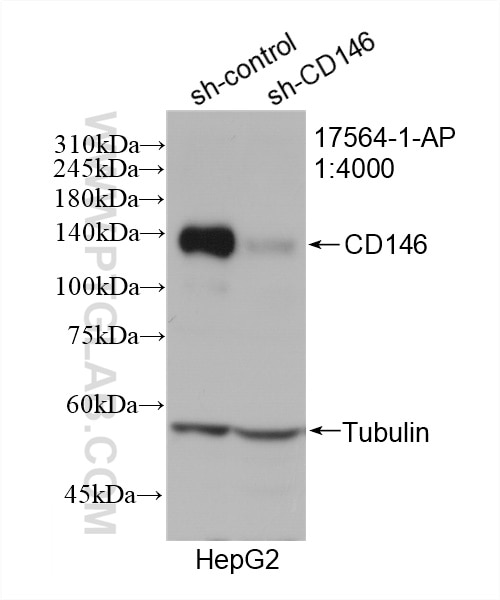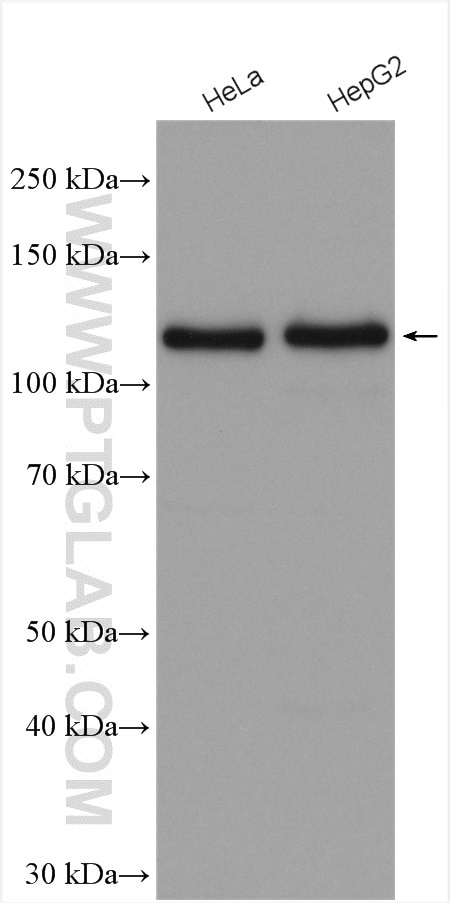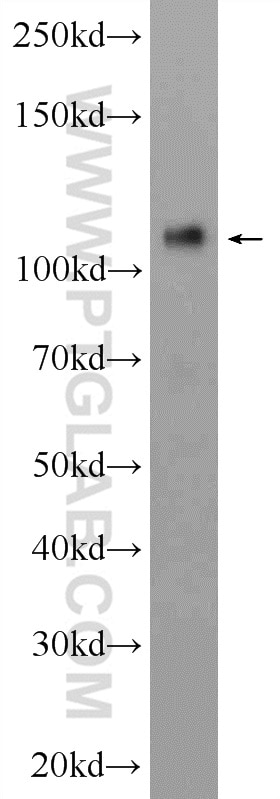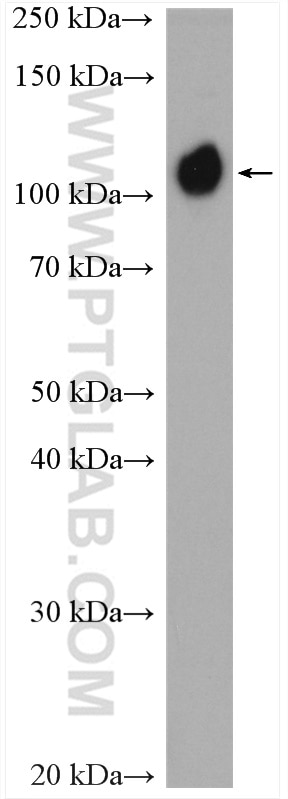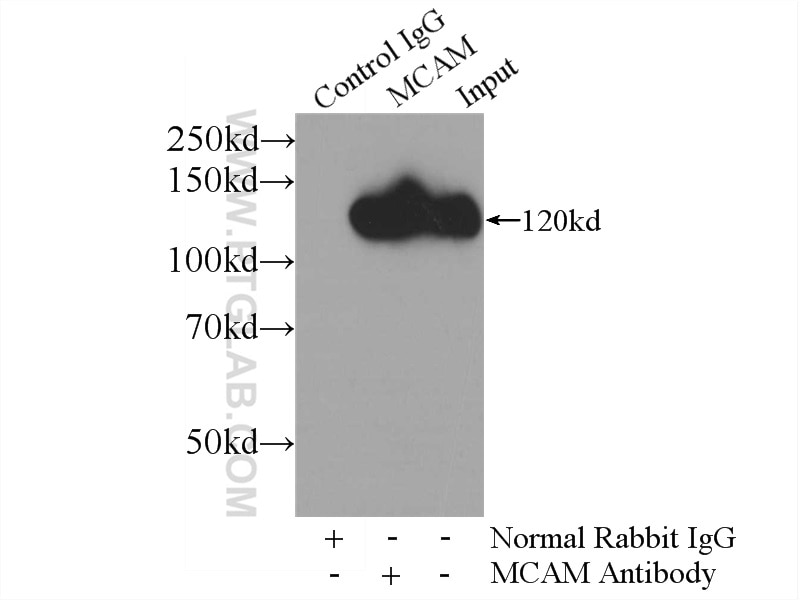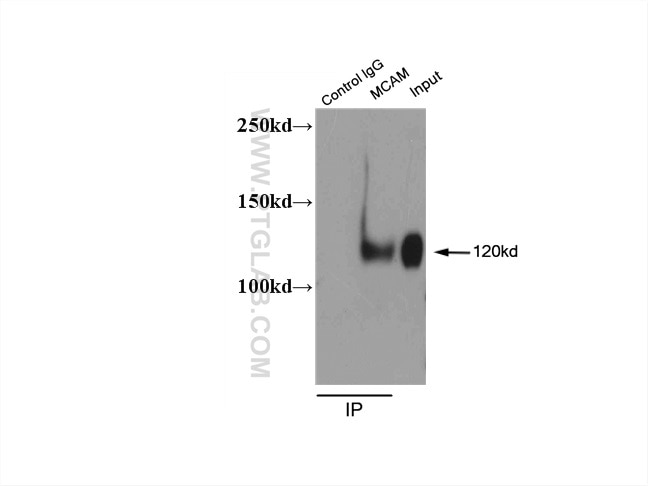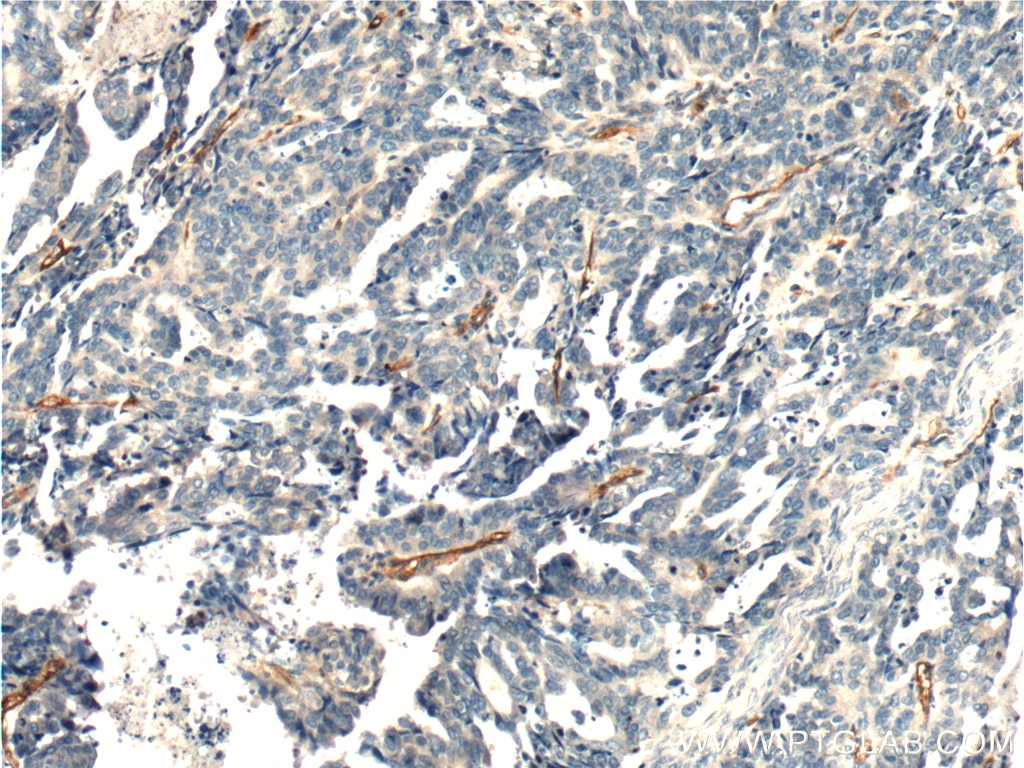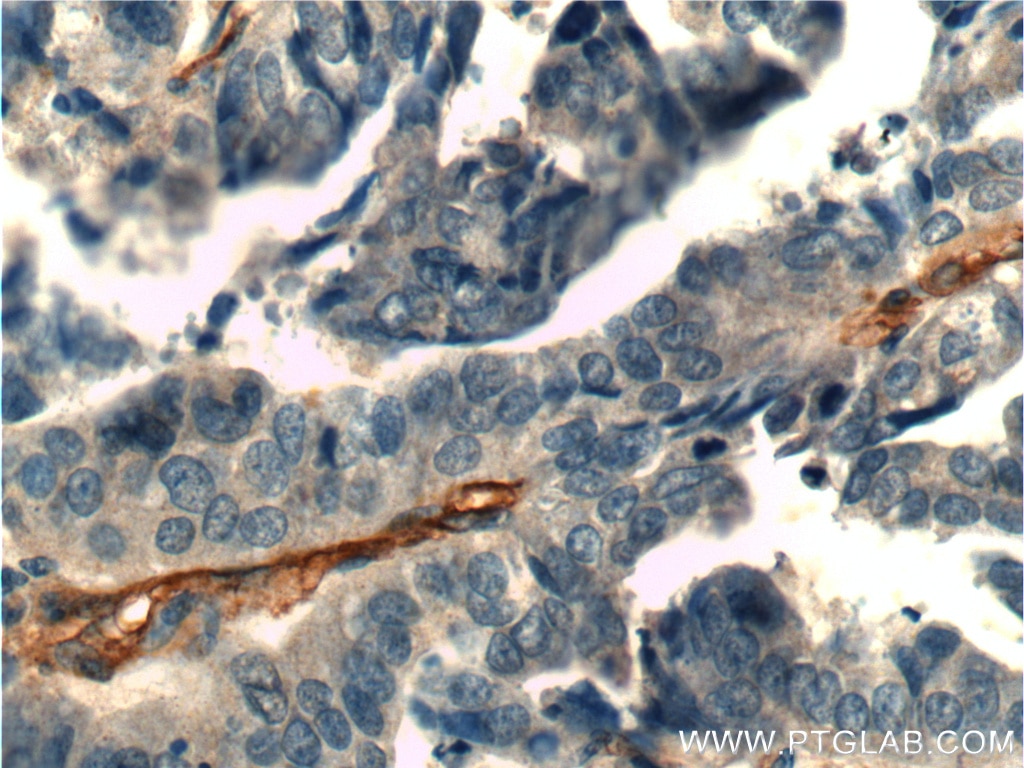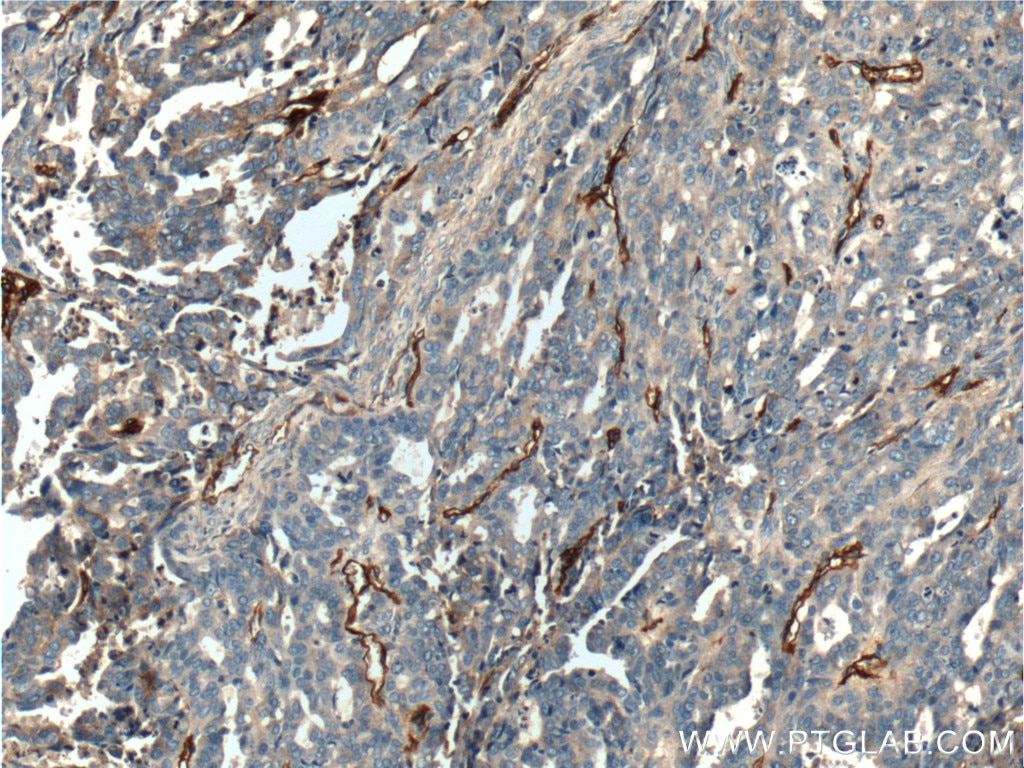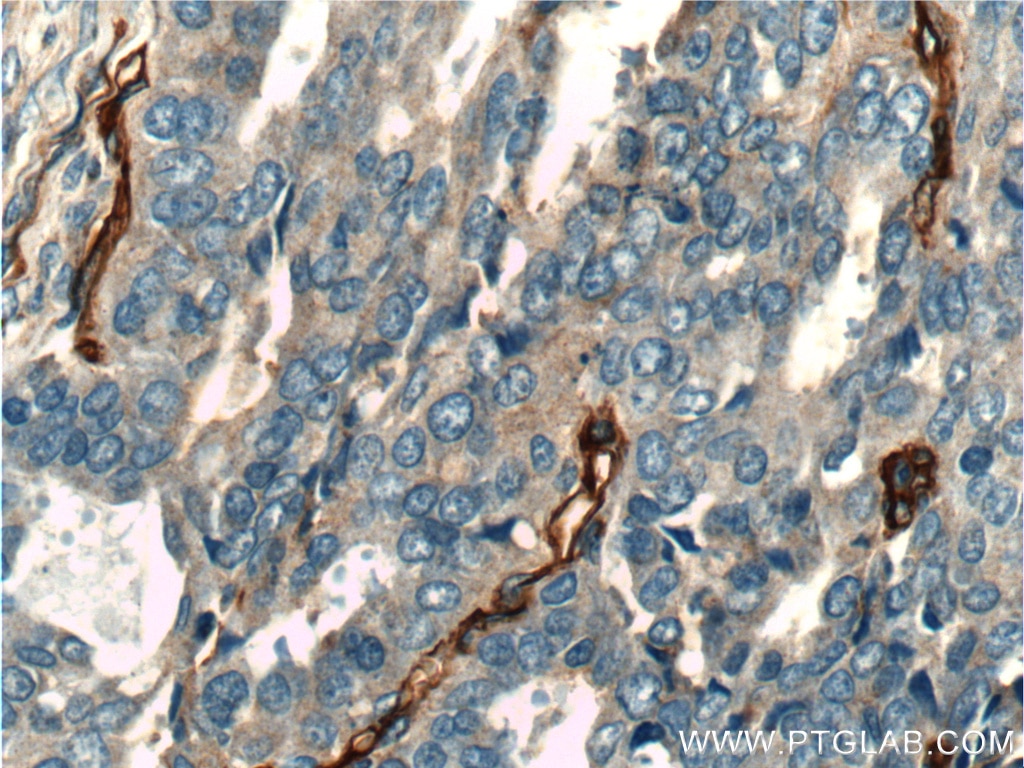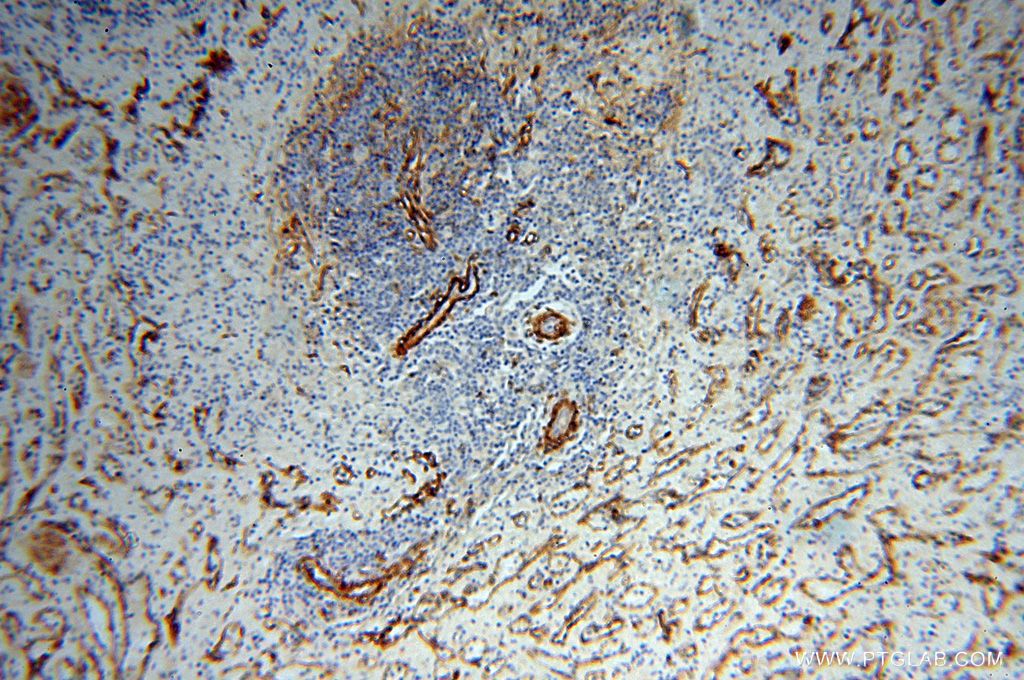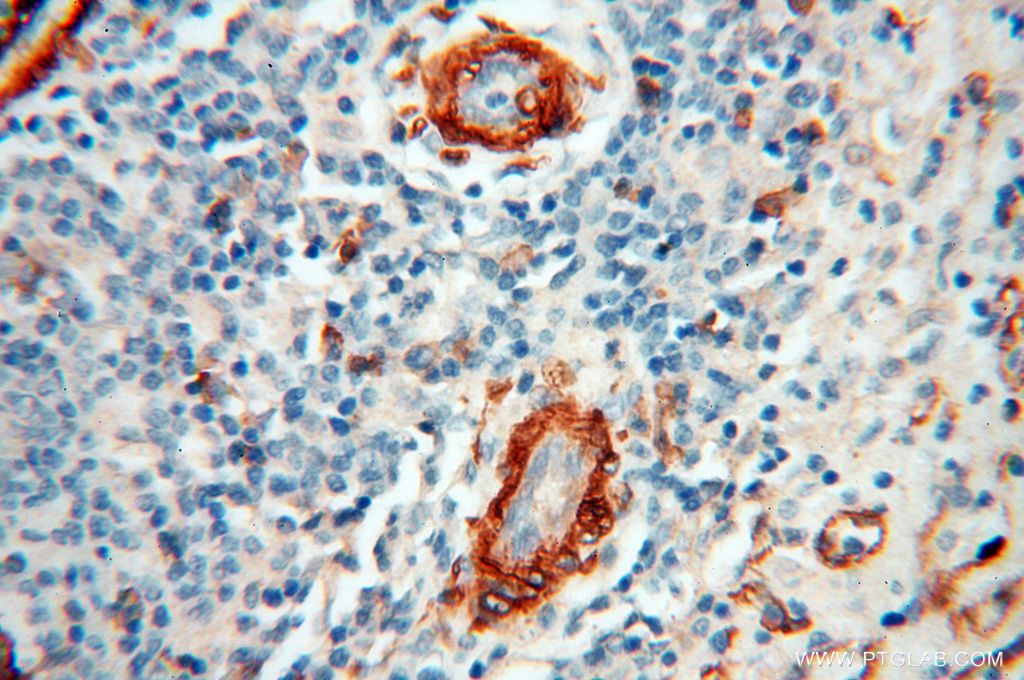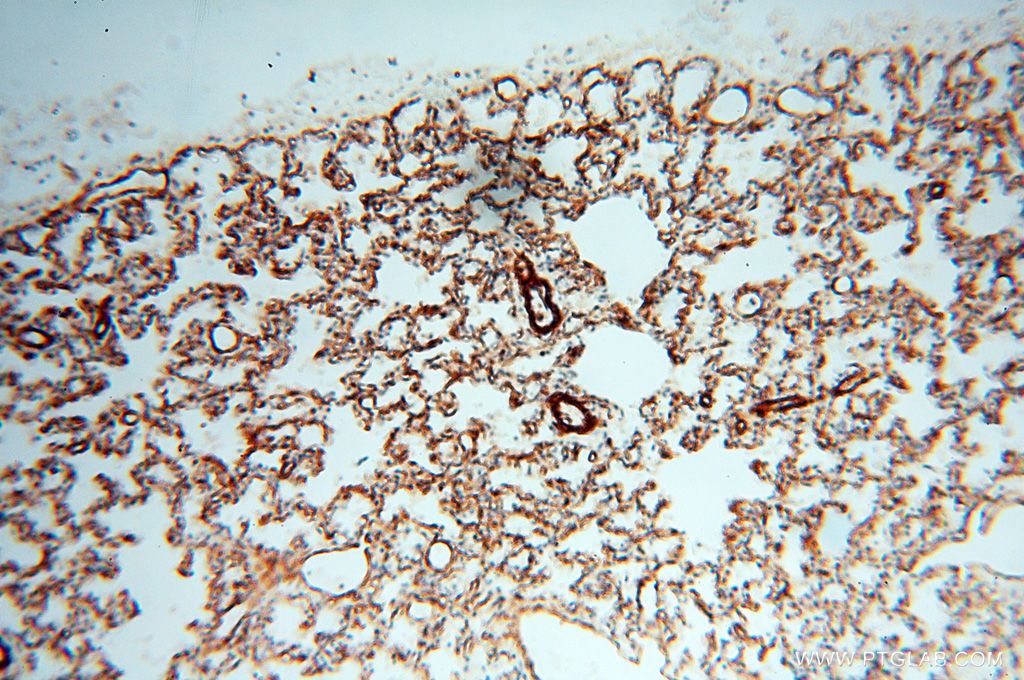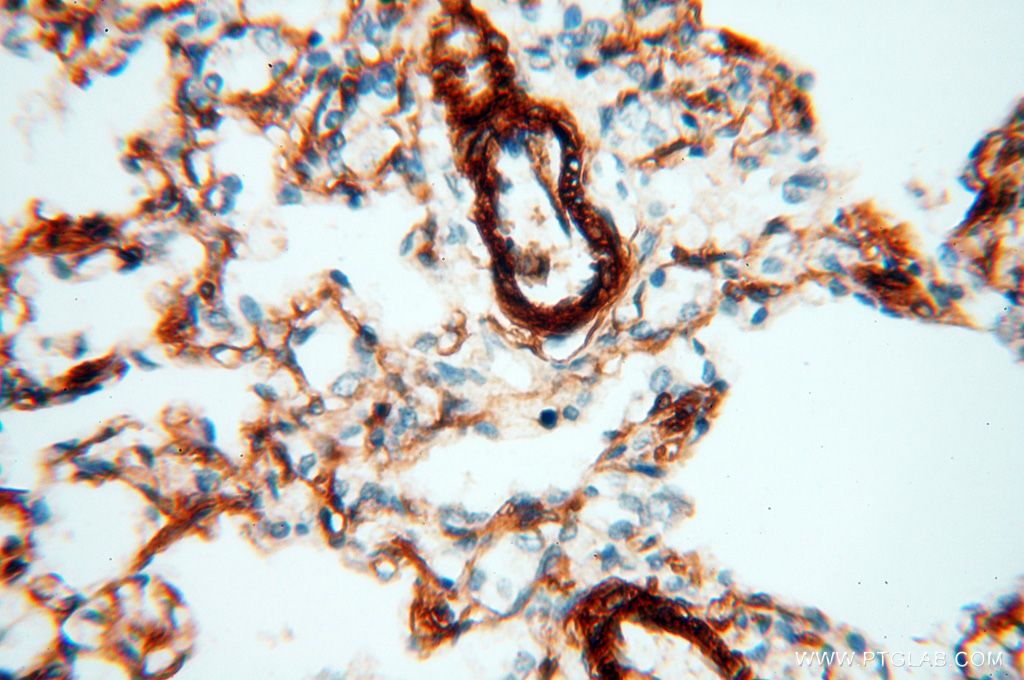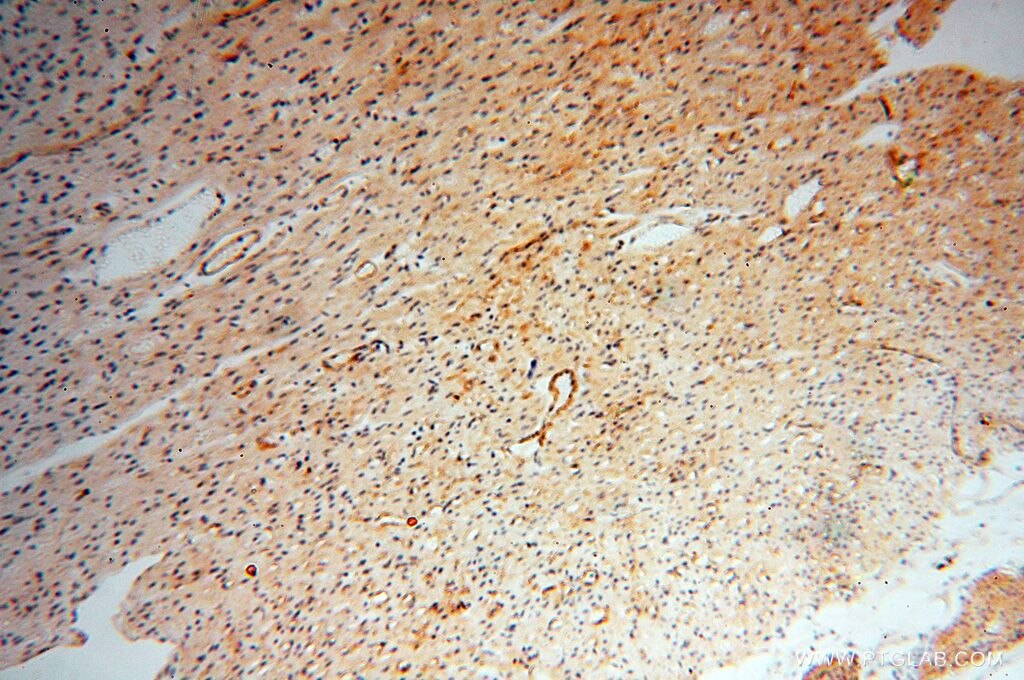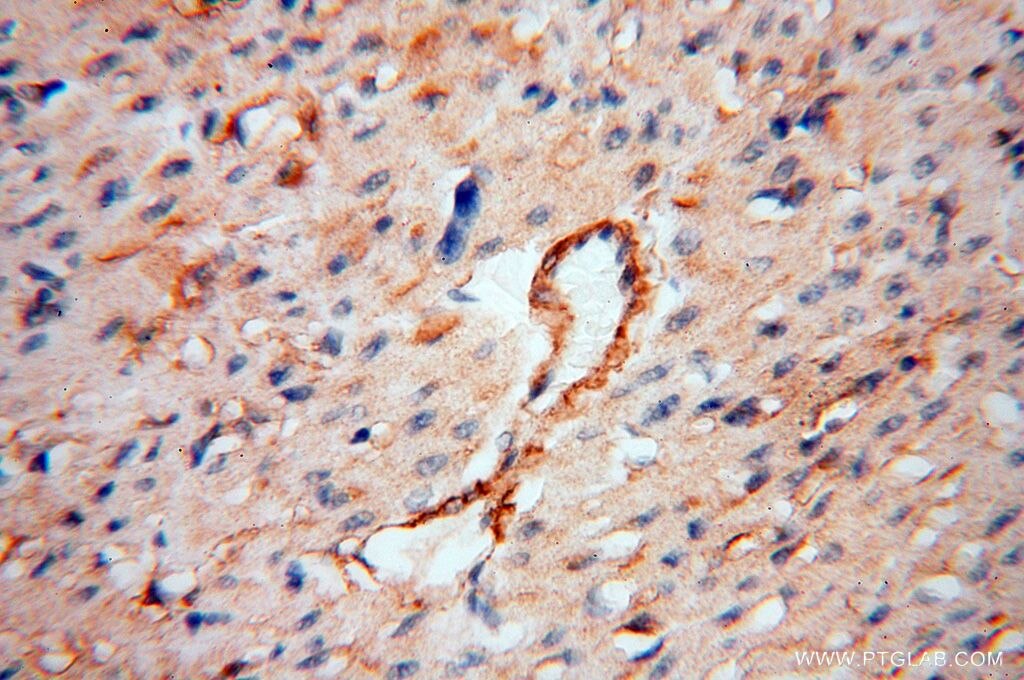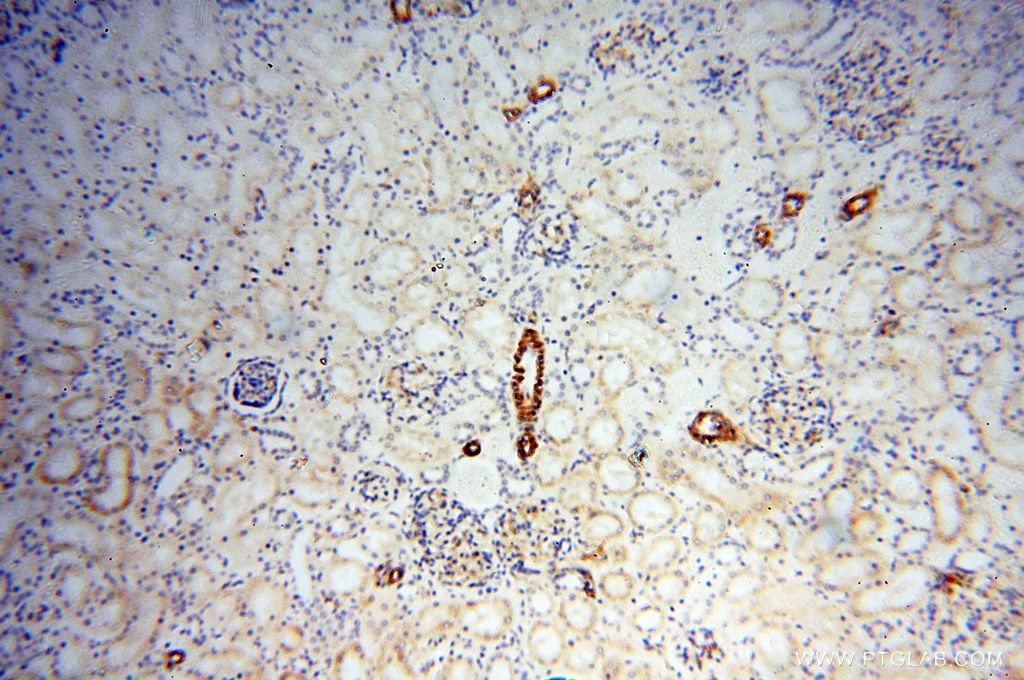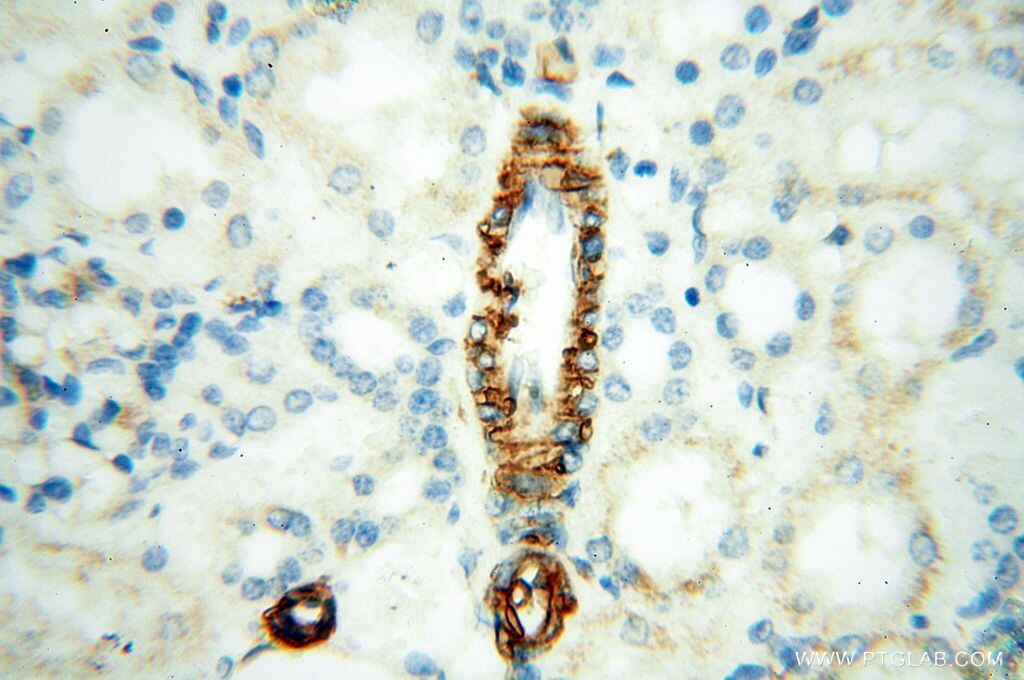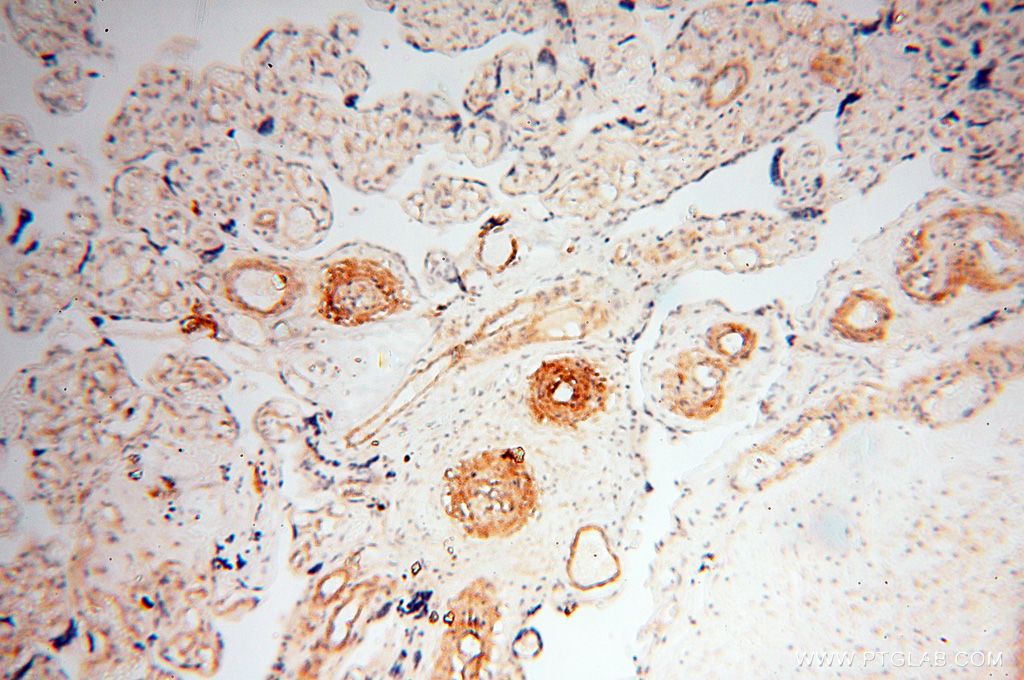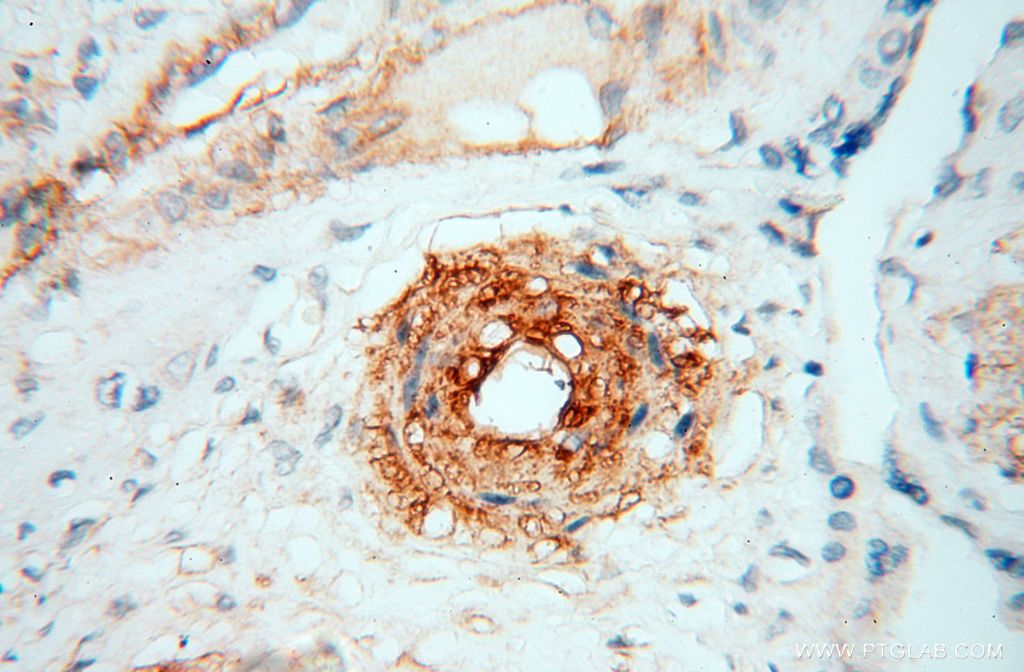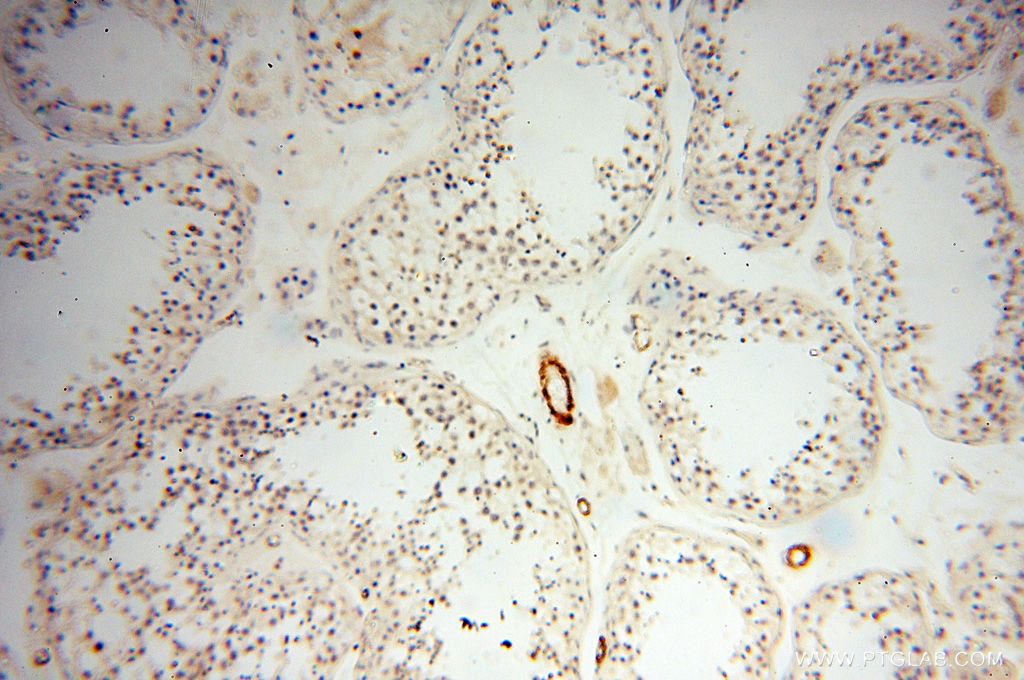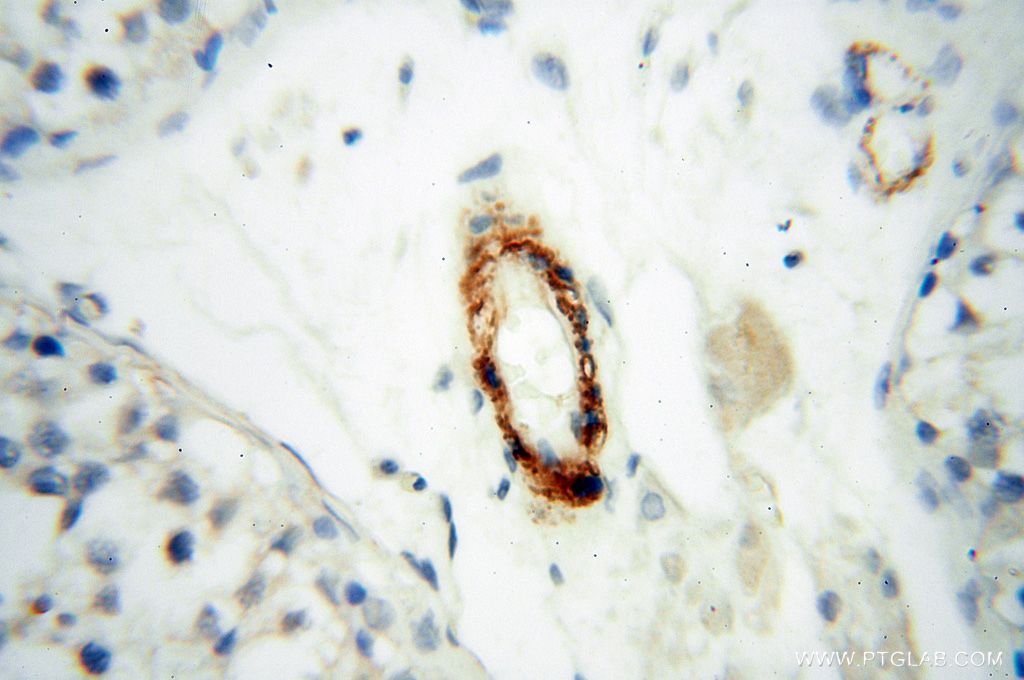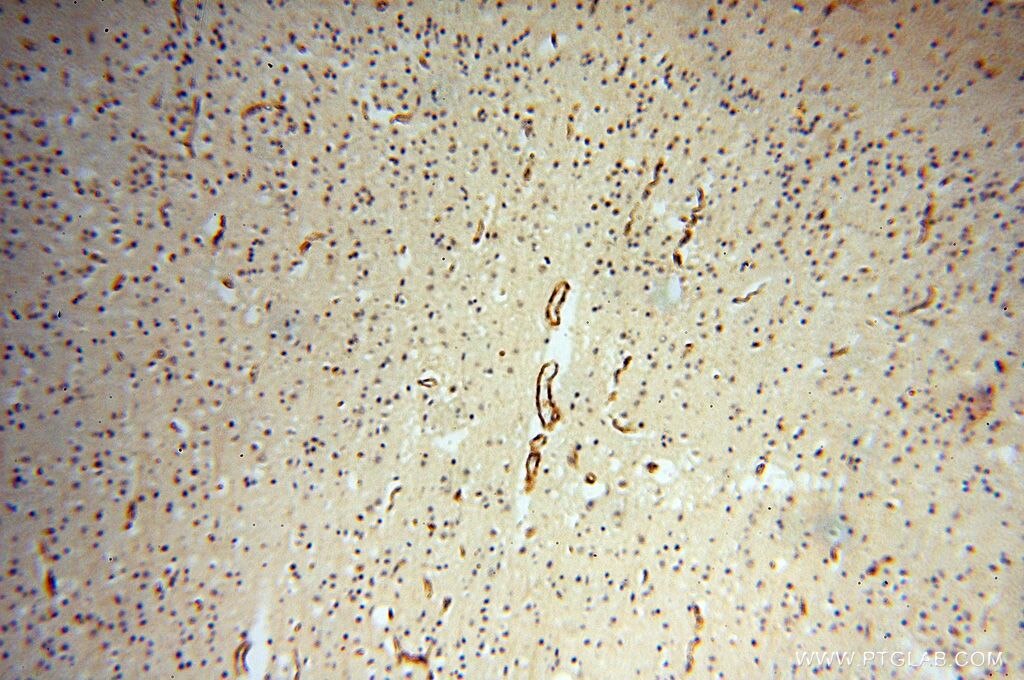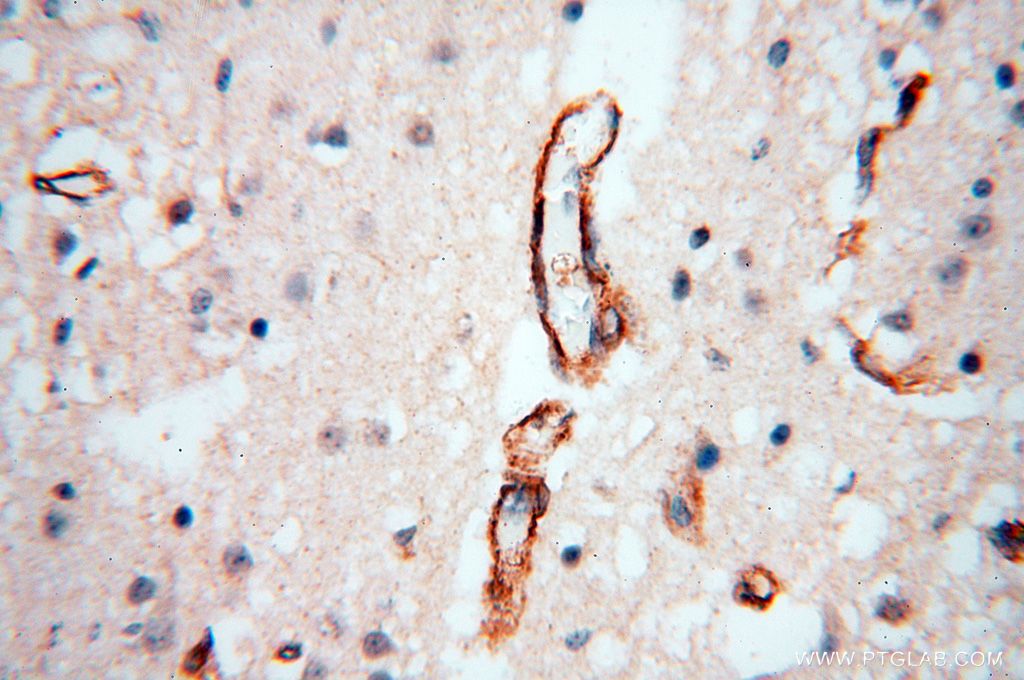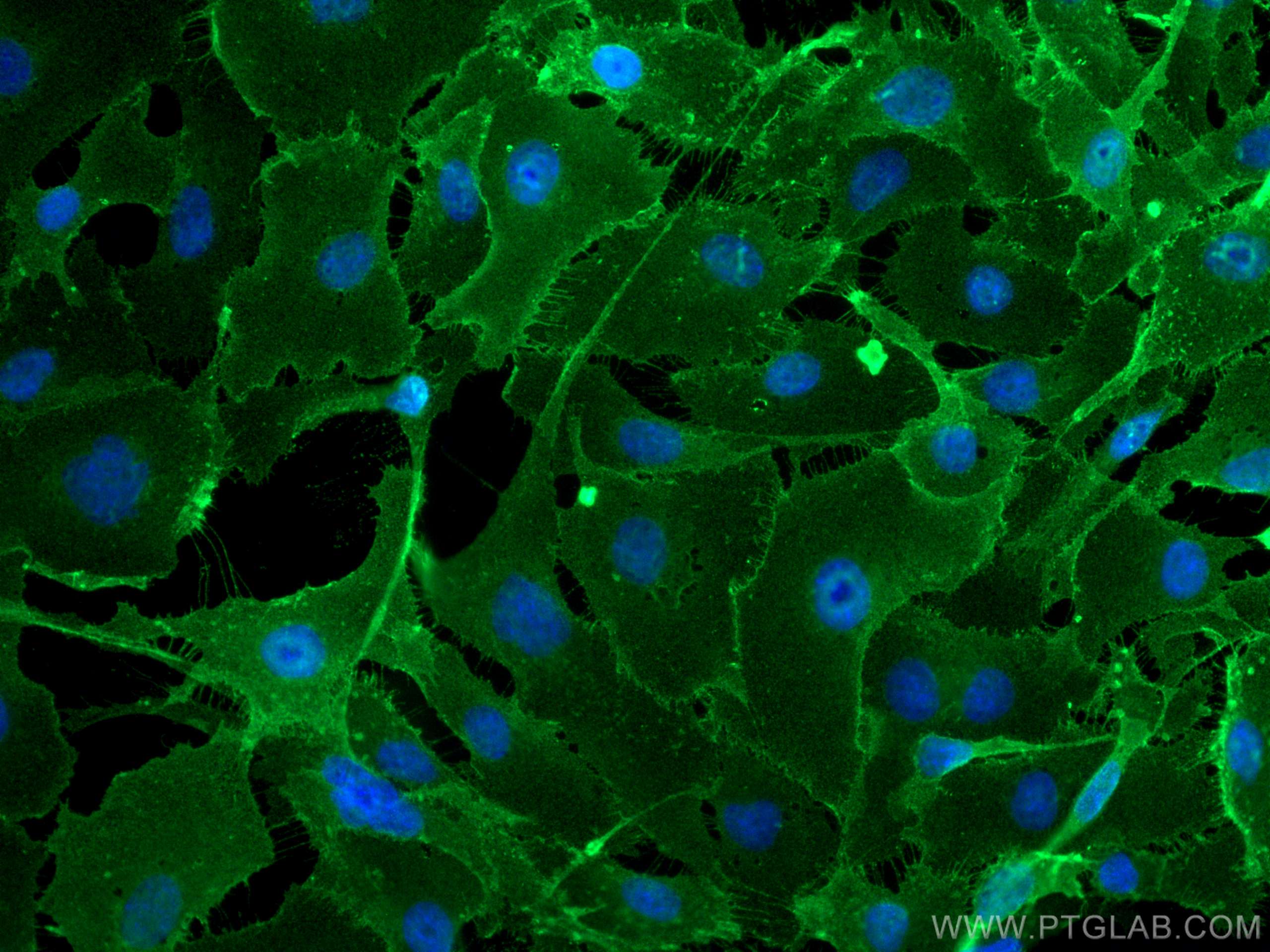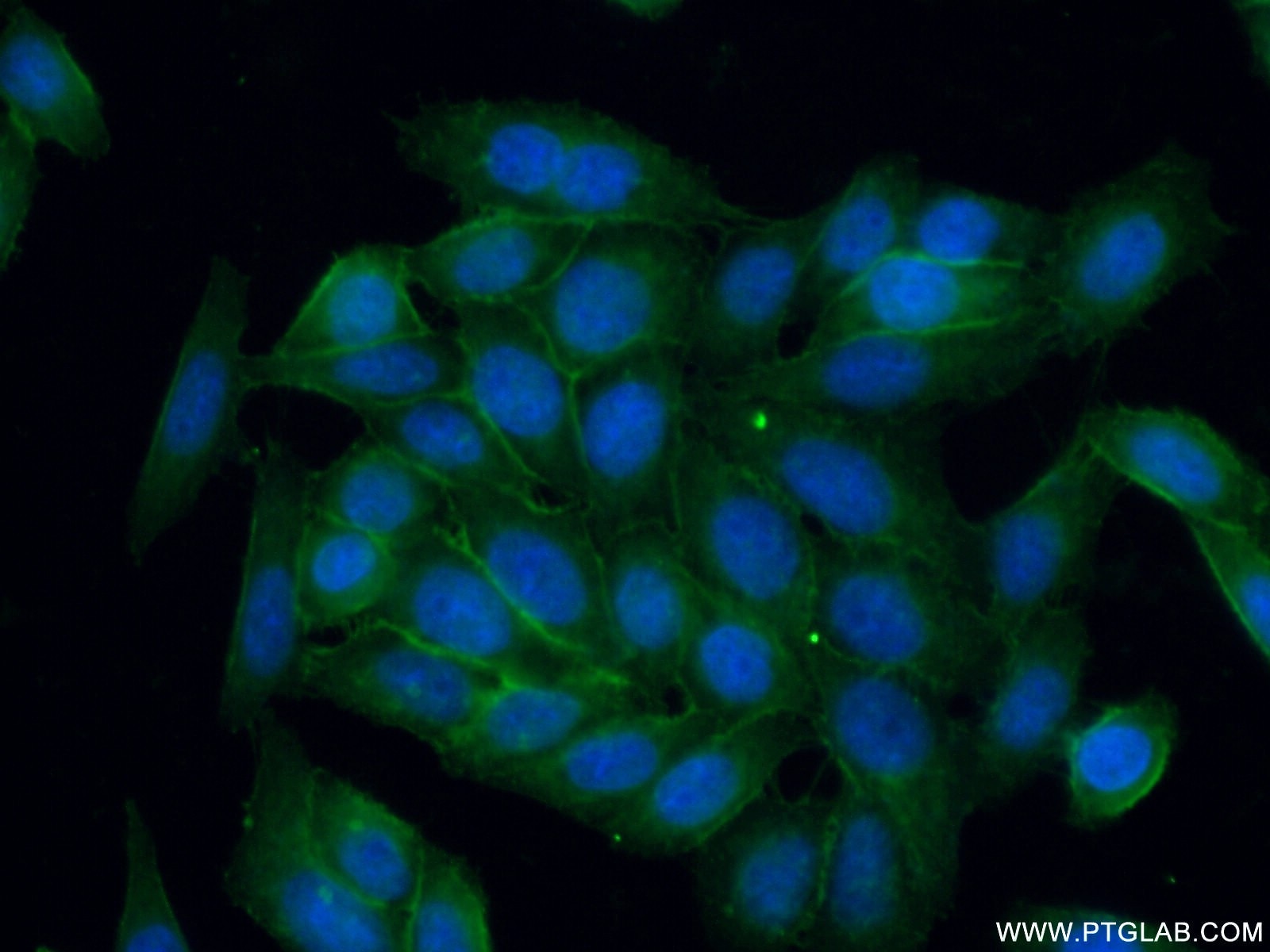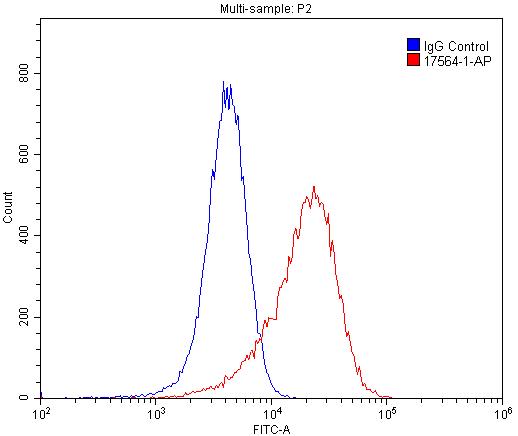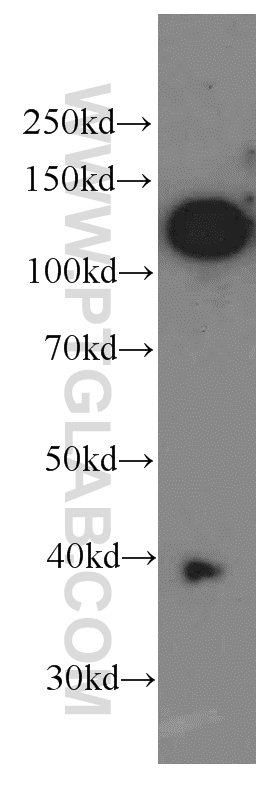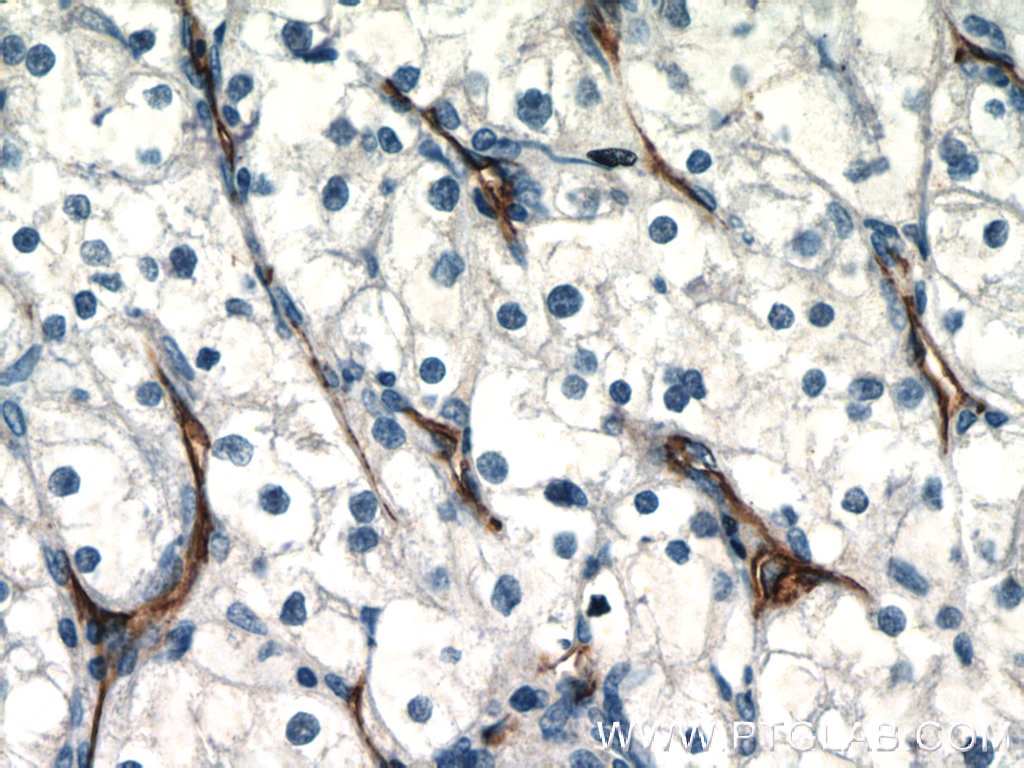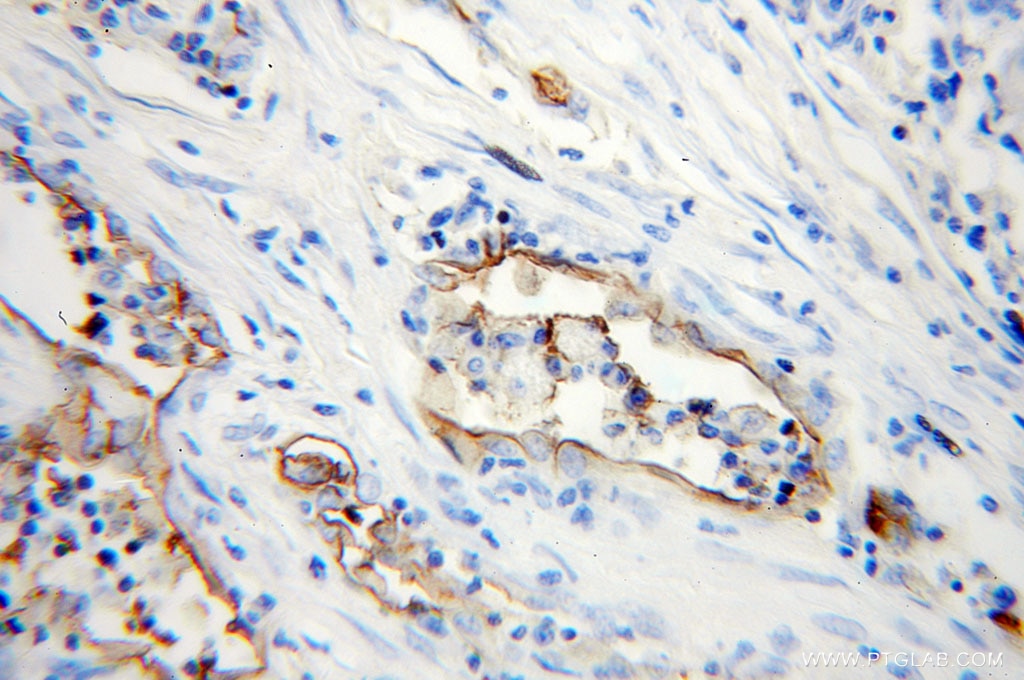- Featured Product
- KD/KO Validated
CD146/MCAM Polyklonaler Antikörper
CD146/MCAM Polyklonal Antikörper für FC, IF, IHC, IP, WB, ELISA
Wirt / Isotyp
Kaninchen / IgG
Getestete Reaktivität
human, Maus, Ratte
Anwendung
WB, IP, IHC, IF, FC, Cell treatment, ELISA
Konjugation
Unkonjugiert
Kat-Nr. : 17564-1-AP
Synonyme
Galerie der Validierungsdaten
Geprüfte Anwendungen
| Erfolgreiche Detektion in WB | HeLa-Zellen, A375-Zellen, HepG2-Zellen, Mauslungengewebe |
| Erfolgreiche IP | HeLa-Zellen, HepG2-Zellen |
| Erfolgreiche Detektion in IHC | humanes Ovarialkarzinomgewebe, humanes Herzgewebe, humanes Hirngewebe, humanes Hodengewebe, humanes Lungengewebe, humanes Milzgewebe, humanes Nierengewebe, humanes Plazenta-Gewebe Hinweis: Antigendemaskierung mit TE-Puffer pH 9,0 empfohlen. (*) Wahlweise kann die Antigendemaskierung auch mit Citratpuffer pH 6,0 erfolgen. |
| Erfolgreiche Detektion in IF | HUVEC-Zellen, HeLa-Zellen |
| Erfolgreiche Detektion in FC | HUVEC-Zellen |
Empfohlene Verdünnung
| Anwendung | Verdünnung |
|---|---|
| Western Blot (WB) | WB : 1:2000-1:10000 |
| Immunpräzipitation (IP) | IP : 0.5-4.0 ug for 1.0-3.0 mg of total protein lysate |
| Immunhistochemie (IHC) | IHC : 1:200-1:600 |
| Immunfluoreszenz (IF) | IF : 1:50-1:500 |
| Durchflusszytometrie (FC) | FC : 0.20 ug per 10^6 cells in a 100 µl suspension |
| It is recommended that this reagent should be titrated in each testing system to obtain optimal results. | |
| Sample-dependent, check data in validation data gallery | |
Veröffentlichte Anwendungen
| KD/KO | See 5 publications below |
| WB | See 8 publications below |
| IHC | See 7 publications below |
| IF | See 10 publications below |
| IP | See 1 publications below |
| FC | See 2 publications below |
Produktinformation
17564-1-AP bindet in WB, IP, IHC, IF, FC, Cell treatment, ELISA CD146/MCAM und zeigt Reaktivität mit human, Maus, Ratten
| Getestete Reaktivität | human, Maus, Ratte |
| In Publikationen genannte Reaktivität | human, Maus, Ratte |
| Wirt / Isotyp | Kaninchen / IgG |
| Klonalität | Polyklonal |
| Typ | Antikörper |
| Immunogen | CD146/MCAM fusion protein Ag11762 |
| Vollständiger Name | melanoma cell adhesion molecule |
| Berechnetes Molekulargewicht | 646 aa, 72 kDa |
| Beobachtetes Molekulargewicht | 113-120 kDa |
| GenBank-Zugangsnummer | BC056418 |
| Gene symbol | MCAM |
| Gene ID (NCBI) | 4162 |
| Konjugation | Unkonjugiert |
| Form | Liquid |
| Reinigungsmethode | Antigen-Affinitätsreinigung |
| Lagerungspuffer | PBS mit 0.02% Natriumazid und 50% Glycerin pH 7.3. |
| Lagerungsbedingungen | Bei -20°C lagern. Nach dem Versand ein Jahr lang stabil Aliquotieren ist bei -20oC Lagerung nicht notwendig. 20ul Größen enthalten 0,1% BSA. |
Hintergrundinformationen
CD146, also known as melanoma cell adhesion molecule (MCAM) or MUC18, originally identified as a biomarker of melanoma progression, is a transmembrane glycoprotein of 113-130 kDa, belonging to the immunoglobulin (Ig) superfamily (PMID: 8378324; 25993332). Structurally, it consists of five Ig domains, a transmembrane domain, and a cytoplasmic region. In normal adult tissue, CD146 is primarily expressed by vascular endothelium and smooth muscle. CD146 is a key cell adhesion protein in vascular endothelial cell activity and angiogenesis, and has been used as marker of circulating endothelium cells (CECs) (PMID: 19356677). In addition to the membrane-anchored form of CD146, a soluble form of CD146 (sCD146, 105 kDa) has also been found in human plasma and in the supernatant of cultured human endothelial cells (PMID: 9462829; 19229070; 16374253; 14597988).
Protokolle
| Produktspezifische Protokolle | |
|---|---|
| WB protocol for CD146/MCAM antibody 17564-1-AP | Protokoll herunterladen |
| IHC protocol for CD146/MCAM antibody 17564-1-AP | Protokoll herunterladen |
| IF protocol for CD146/MCAM antibody 17564-1-AP | Protokoll herunterladen |
| IP protocol for CD146/MCAM antibody 17564-1-AP | Protokoll herunterladen |
| Standard-Protokolle | |
|---|---|
| Klicken Sie hier, um unsere Standardprotokolle anzuzeigen |
Publikationen
| Species | Application | Title |
|---|---|---|
Biomaterials Macropore design of tissue engineering scaffolds regulates mesenchymal stem cell differentiation fate. | ||
Oncogene The histone demethylase KDM3A, and its downstream target MCAM, promote Ewing Sarcoma cell migration and metastasis.
| ||
Cell Prolif Dental pulp stem cells-based therapy for the oviduct injury via immunomodulation and angiogenesis in vivo. | ||
Stem Cell Res Ther Connective tissue growth factor promotes cementogenesis and cementum repair via Cx43/β-catenin axis | ||
J Proteome Res Comparative Proteomic Analysis of Primary Schwann Cells and a Spontaneously Immortalized Schwann Cell Line RSC 96: A Comprehensive Overview with a Focus on Cell Adhesion and Migration Related Proteins.
|
Rezensionen
The reviews below have been submitted by verified Proteintech customers who received an incentive forproviding their feedback.
FH Boyan (Verified Customer) (09-28-2020) | This antibody recognises a band around the expected molecular weight, however this band did not respond to deglycosylation treatment. This strongly suggests the recognised band is another protein other than Mcam, because Mcam is glycosylated, and looking at the other Mcam antibody from the same brand (66153-1-g), it is clear that the band is responsive to PNGaseF treatment.
|
